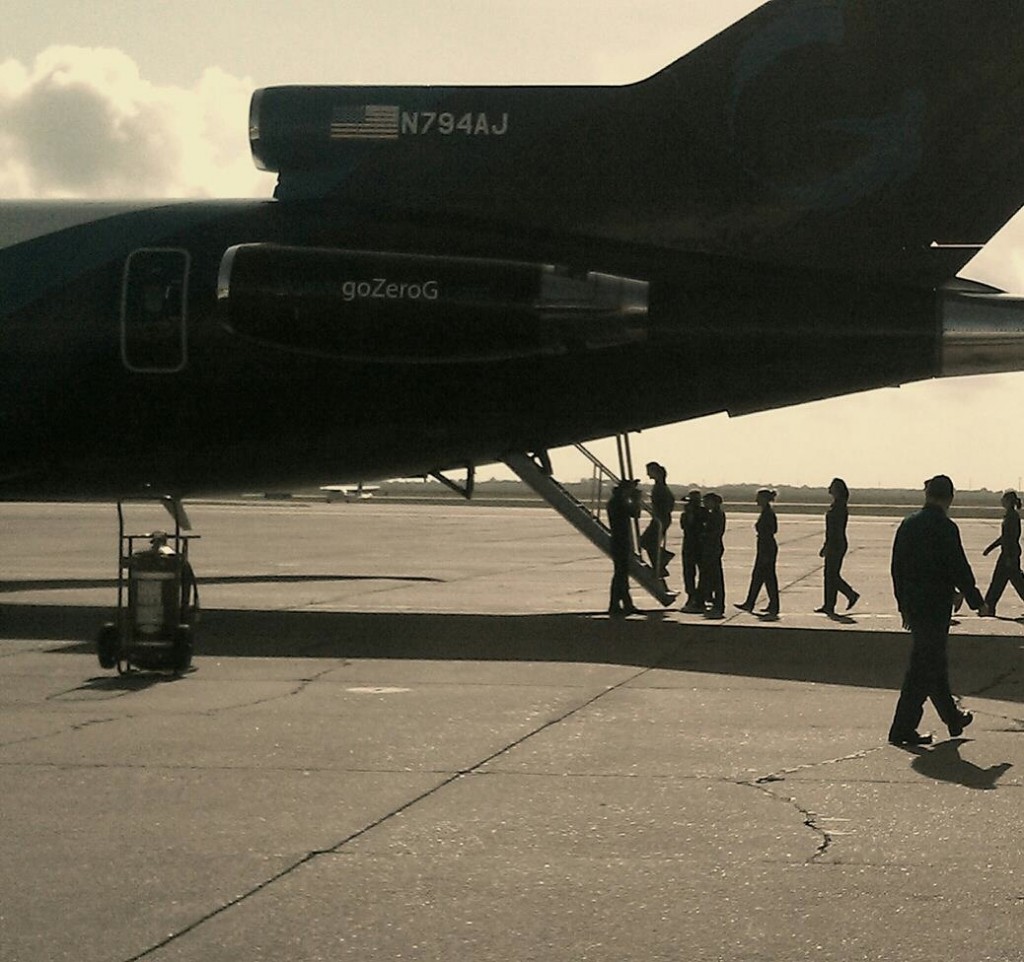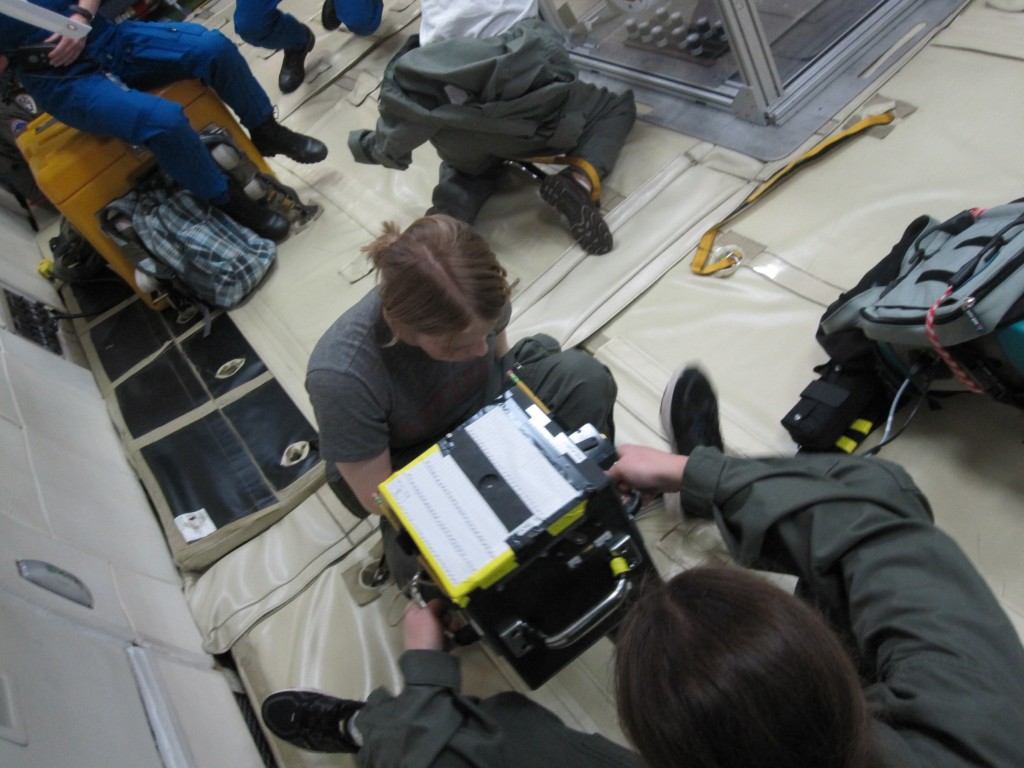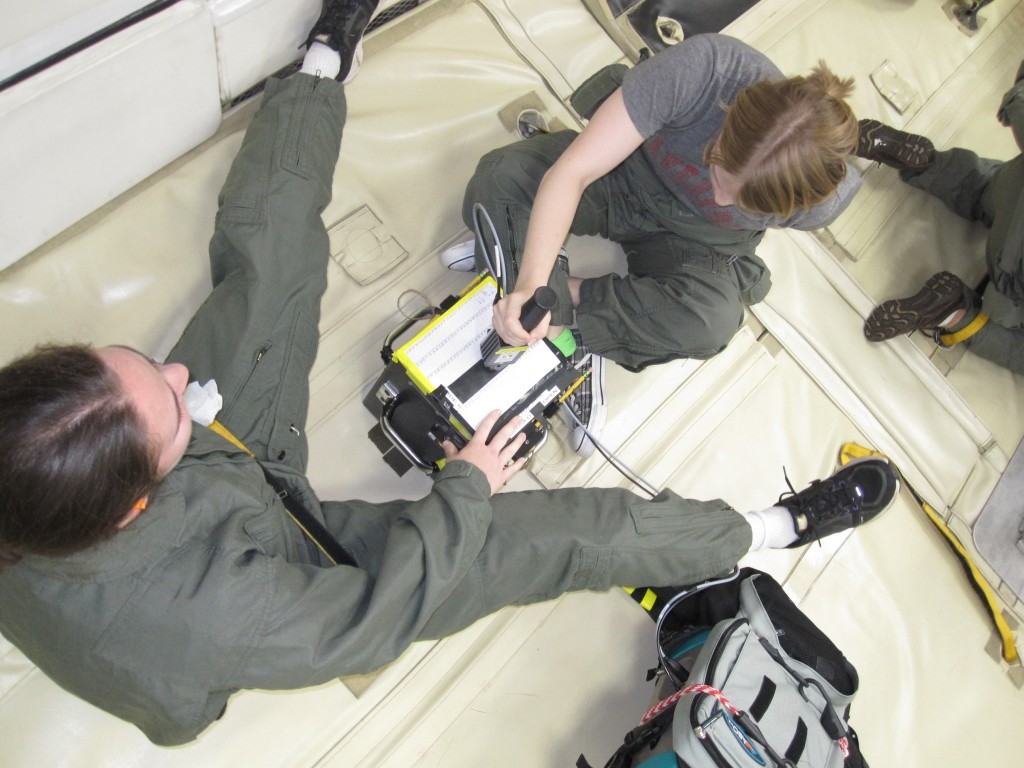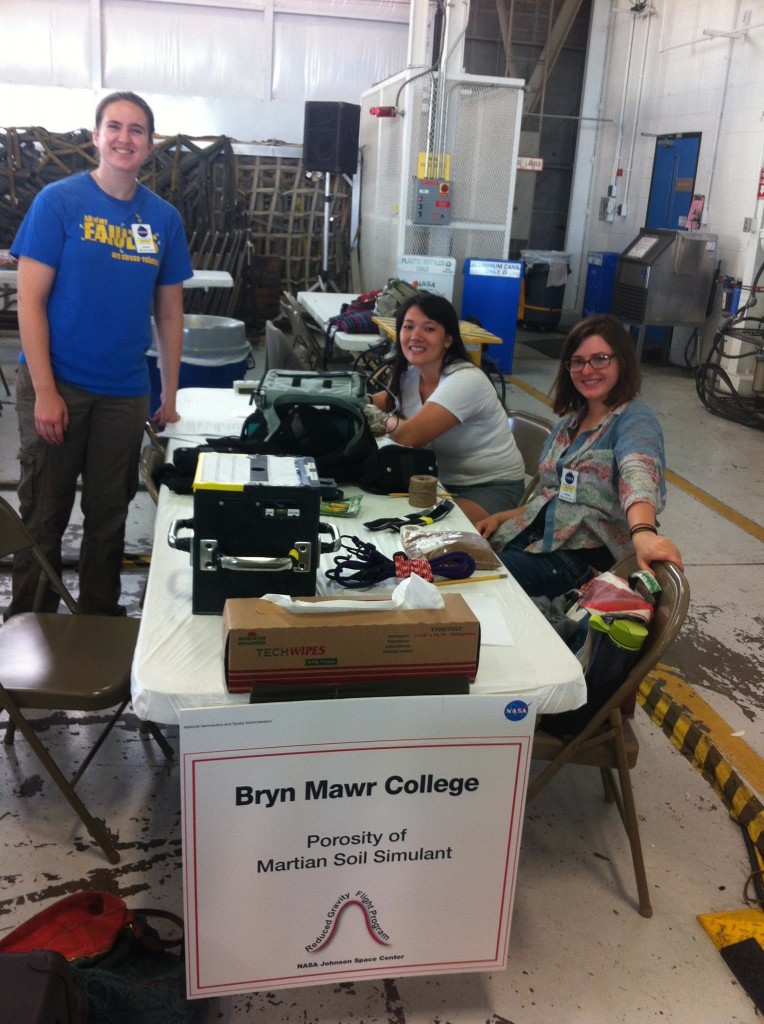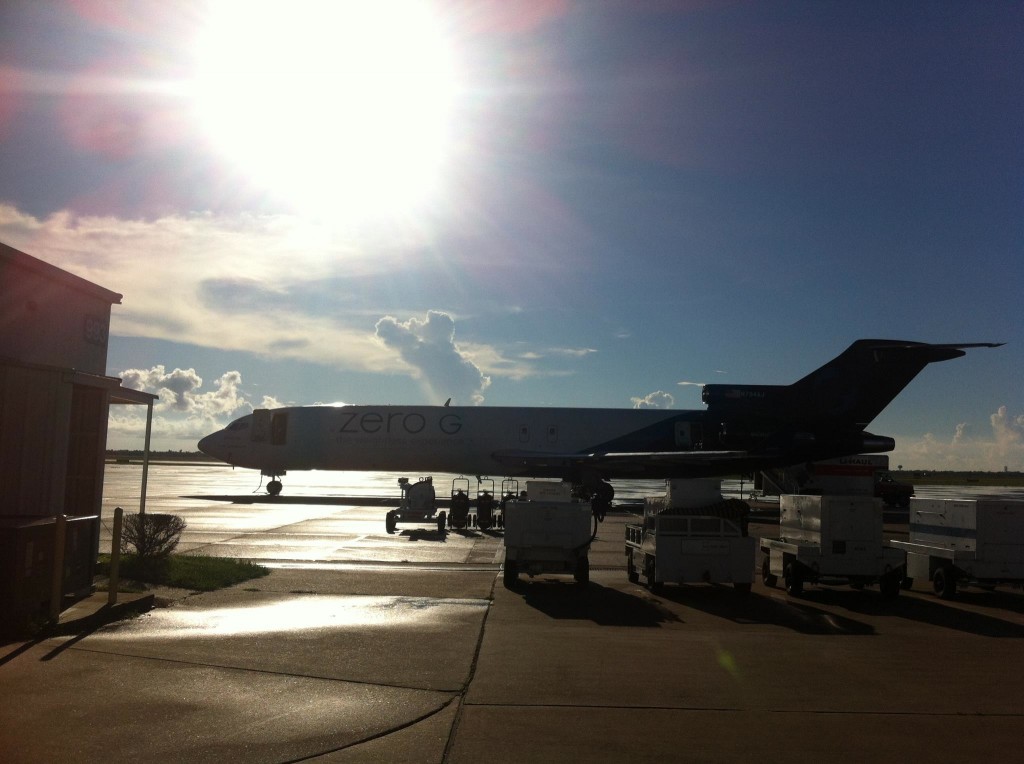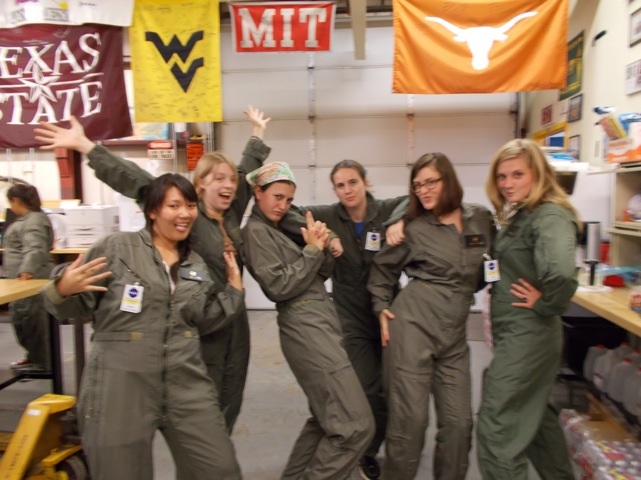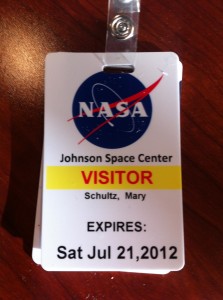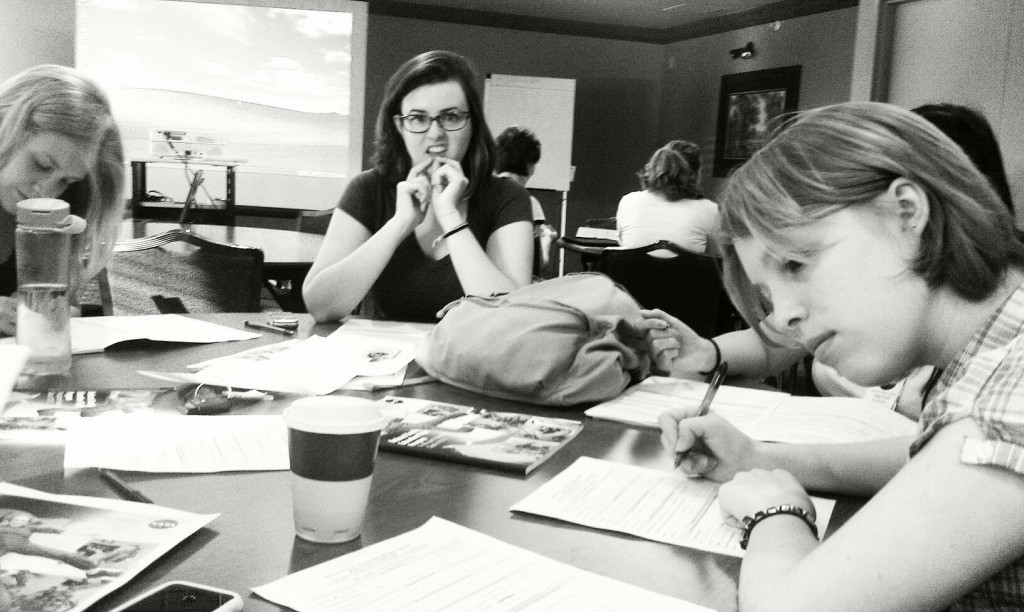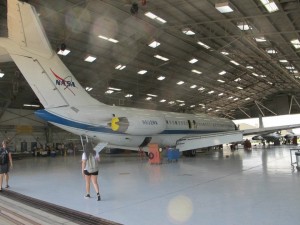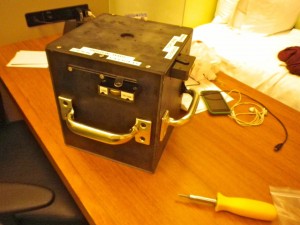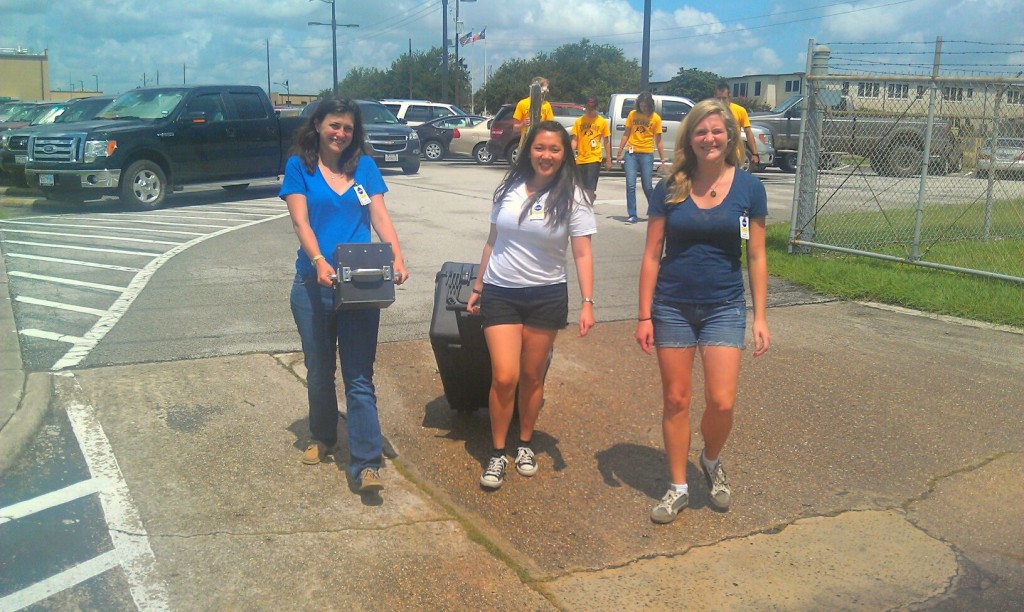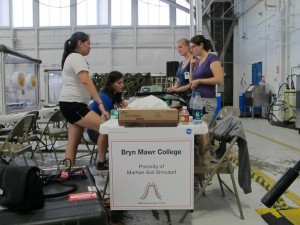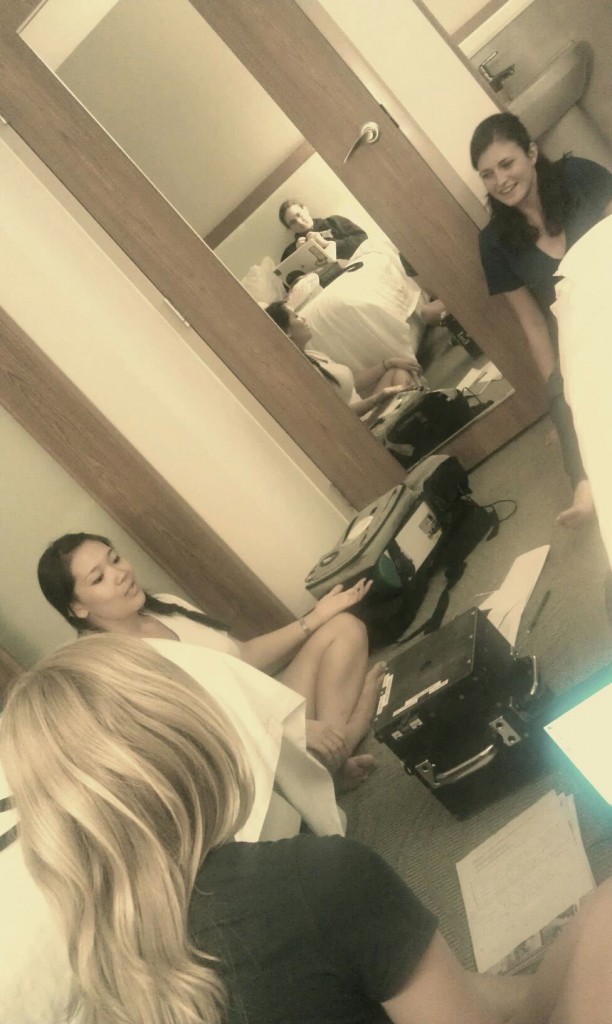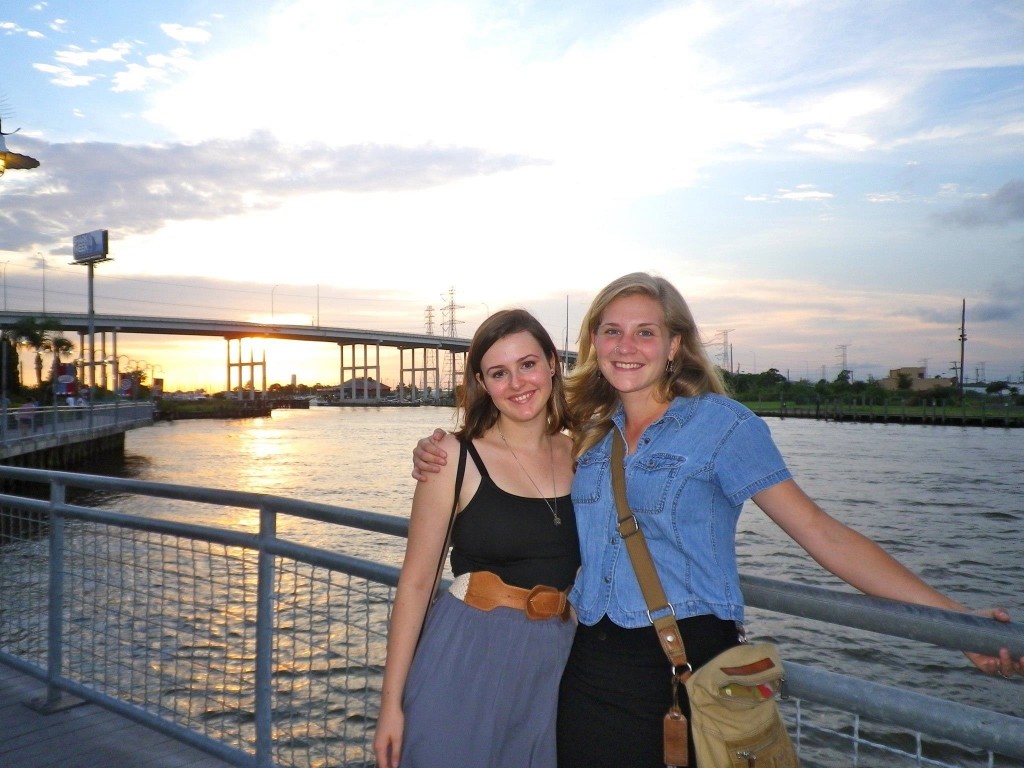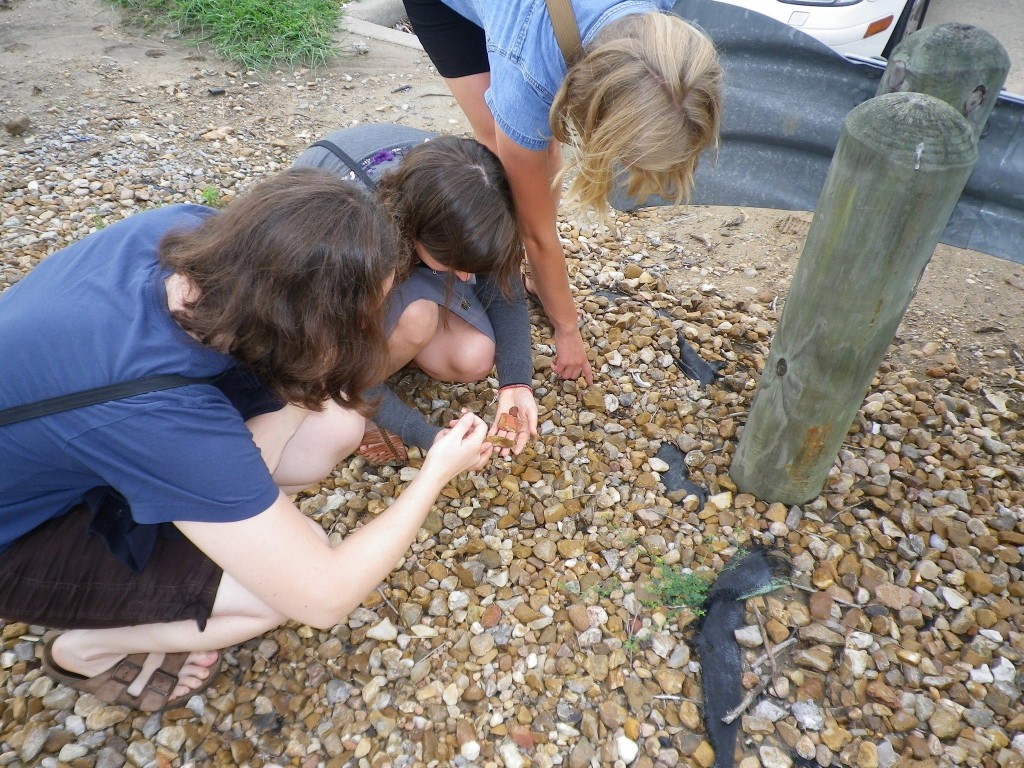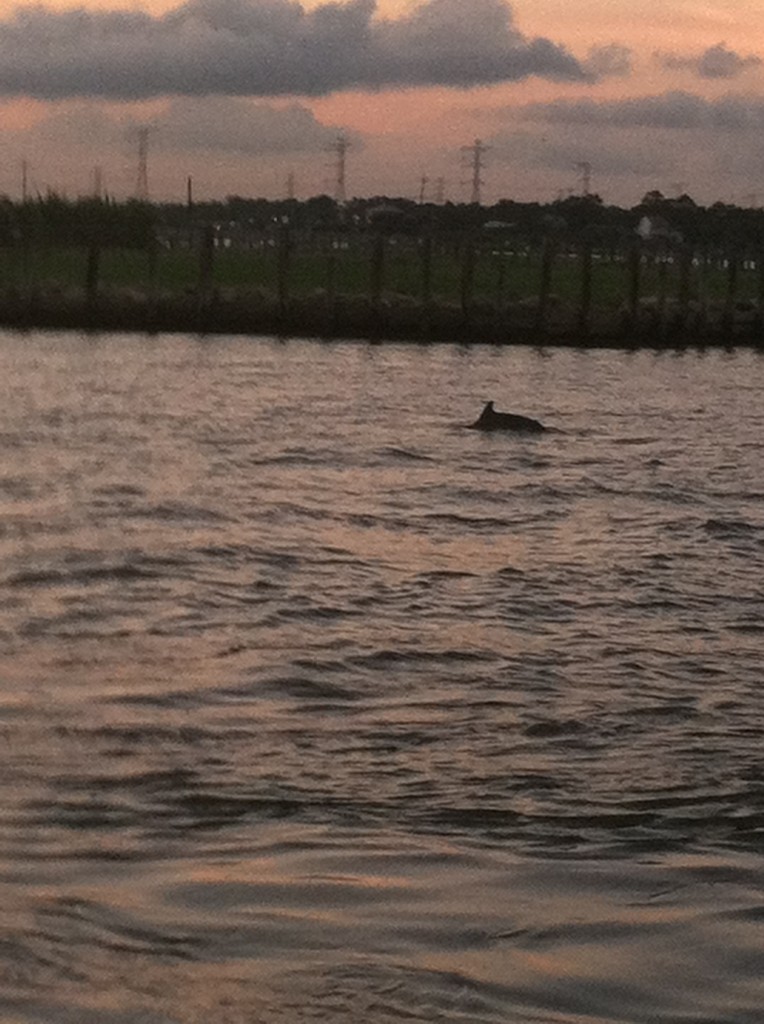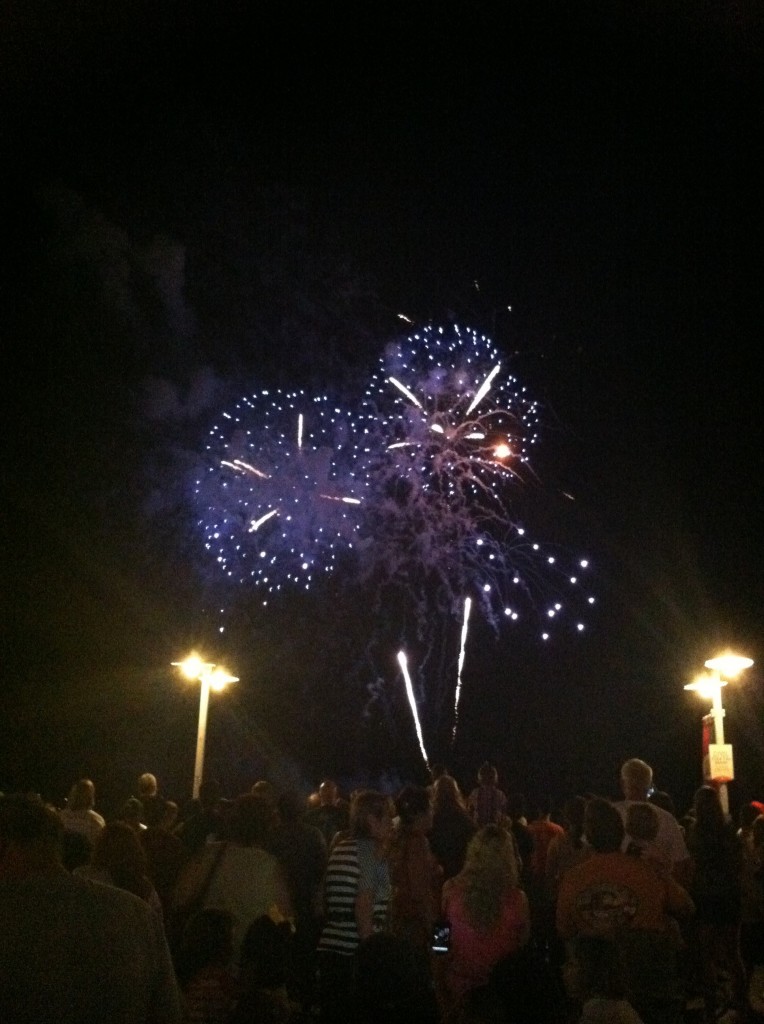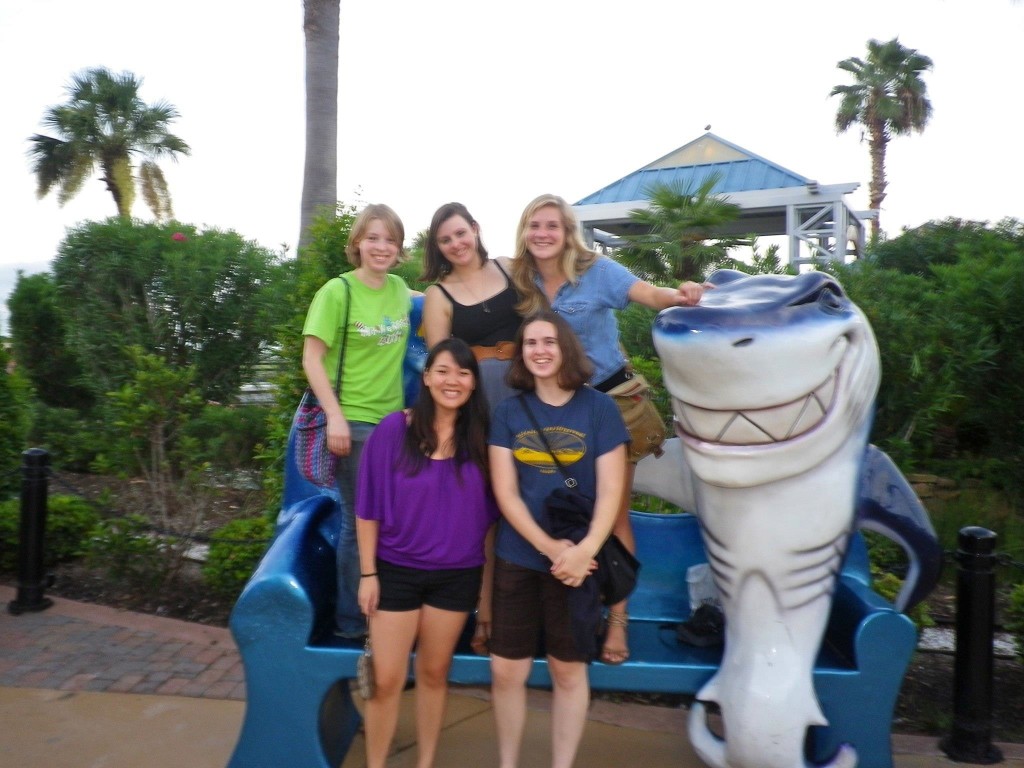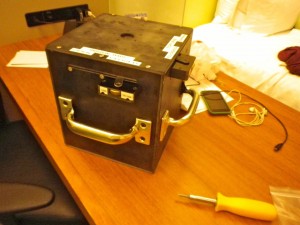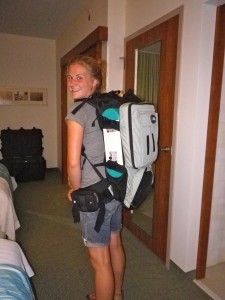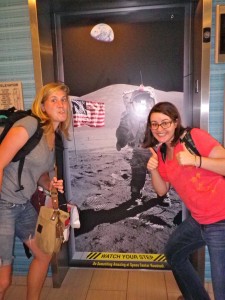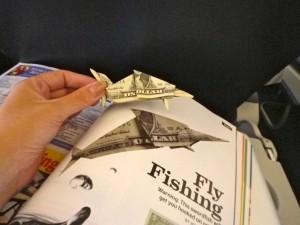Flight Day – And Delay.
According to the original schedule, team A1 was intended to fly Wednesday morning. According to the laws of irony, Wednesday morning at about 7:48 am was precisely the time for the top iris on the box to jam. With all the panic owed to the occasion, we screwed off the top, blew off some dust, and then re-screwed some bits that had fallen out. 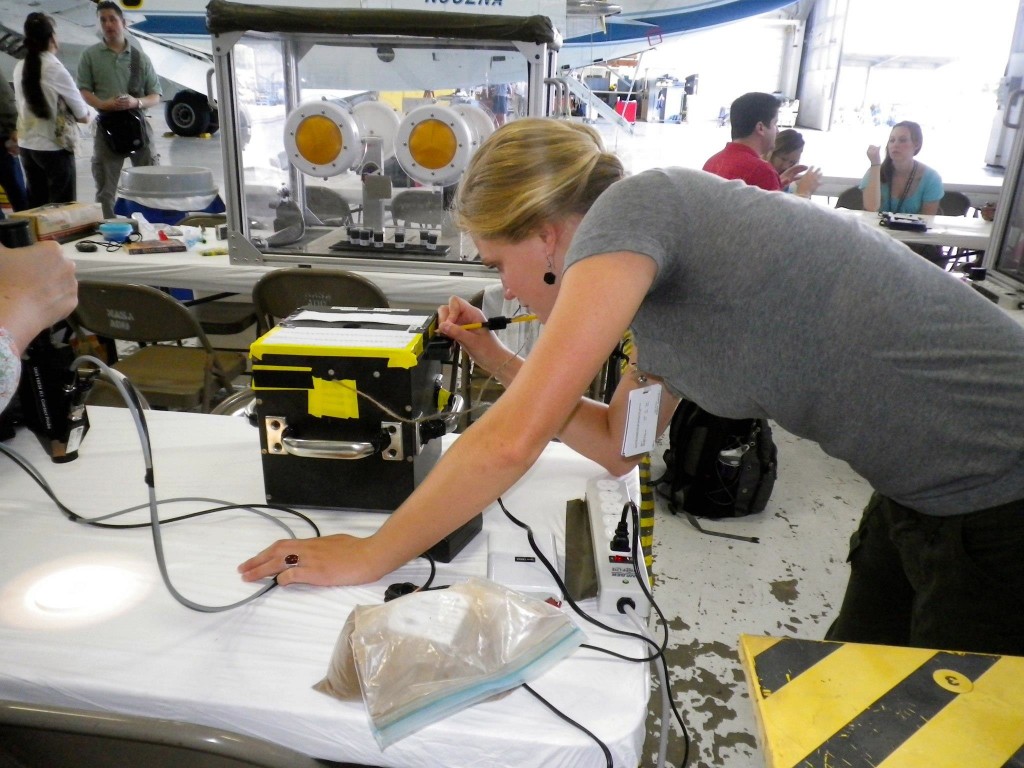 The box bides its time. Waiting.
The box bides its time. Waiting.
Still running on the sort of vague adrenaline high born purely from utter terror, Group A1 made our way to the briefing room for our pre-flight briefing. About twenty minutes in, we were informed that, due to the massive storm building over the Gulf, we would not be flying that day. The fact that the air over Houston was completely clear, was of course intended to taunt us.
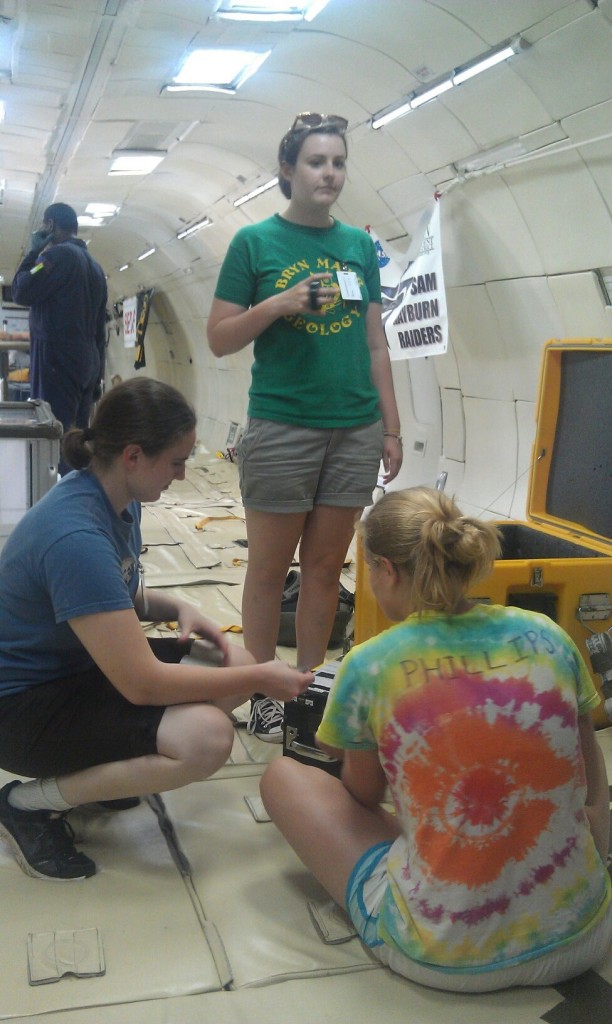 “Now the best part – taking everything you just did, down!”
“Now the best part – taking everything you just did, down!”
So instead, we removed our equipment from the plane, and went to Space Center Houston. The touristy one. It was very . . . there were many children in matching shirts. There was a tram ride to see the old Mission Control room, and there was a touching film that might have been about space travel but also about international cooperation on a very large screen. The music was very inspirational. 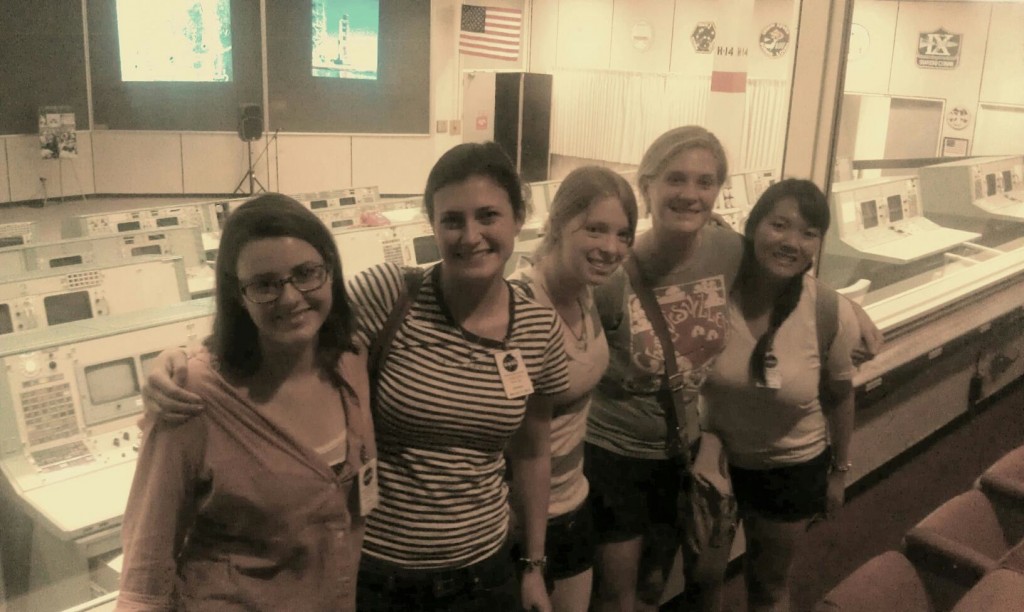 Even the dust in this room is both inspiring and patriotic.
Even the dust in this room is both inspiring and patriotic.
Later that afternoon, there was sort of fancy teleconference with a group from Hawaii, who called in to NASA to talk about gathering lunar sediment samples from the bottom of the ocean. And finally, our mentor, Tamra, invited us over to her home for a spectacular spaghetti dinner. Thanks, Tamra!
Thursday
Thursday dawned sunny. Much like Wednesday. As we got to Ellington Field for the 7:45 morning briefing however, we were informed that this time, the morning flight was on!
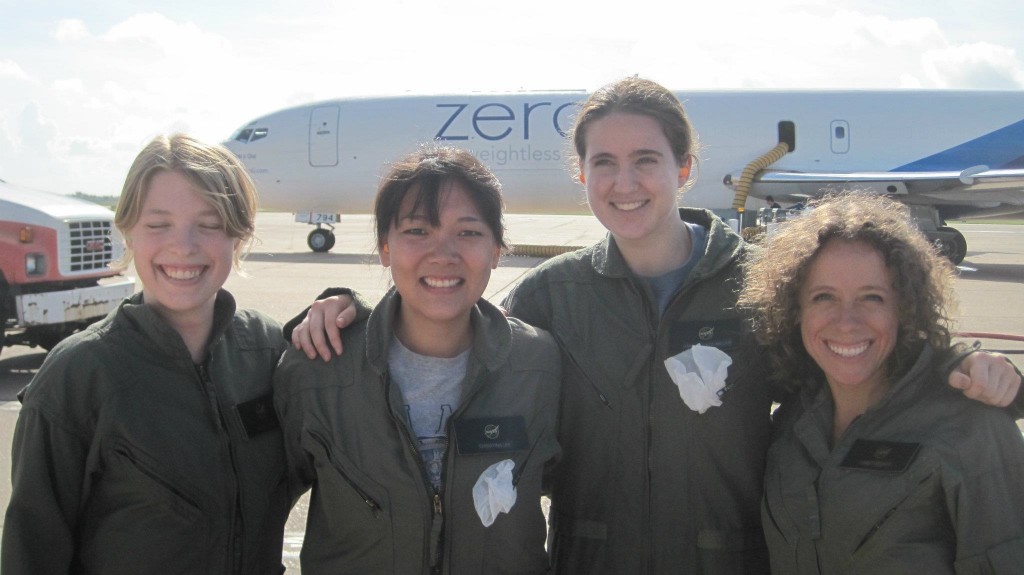 One of these people helps the vomit comet live up to its name. But BMC Geology doesn’t barf and tell.
One of these people helps the vomit comet live up to its name. But BMC Geology doesn’t barf and tell.
Team A1 (Christina, Alice, our mentor Tamra, and myself) showed up to the briefing room for the pre-flight briefing and the nausea meds, fully suited up and ready to go. We received injections (or took pills, depending on needle tolerance), anxiously waited to visit the restroom until the absolute last, last, last, minute – there is a fine balance to being hydrated and not having to pee every hour – and boarded the plane!

After the first 5 or so minutes of normal flight, all teams were given the go-ahead to start setting up our equipment. We took the spectrometer and soil box out of some locking yellow bins, and strapped everything to the floor. Why strap everything to the floor? Because we had to worry about it floating away and that was a really weird variable to even need to think about when designing this experiment in the first place. (“Oh no this won’t work at all because it’s going to float one way, we’ll fly off in the opposite direction, and then when the gravity comes back on it will fall and hit someone in the head and then NASA won’t let us on their planes anymore.”)
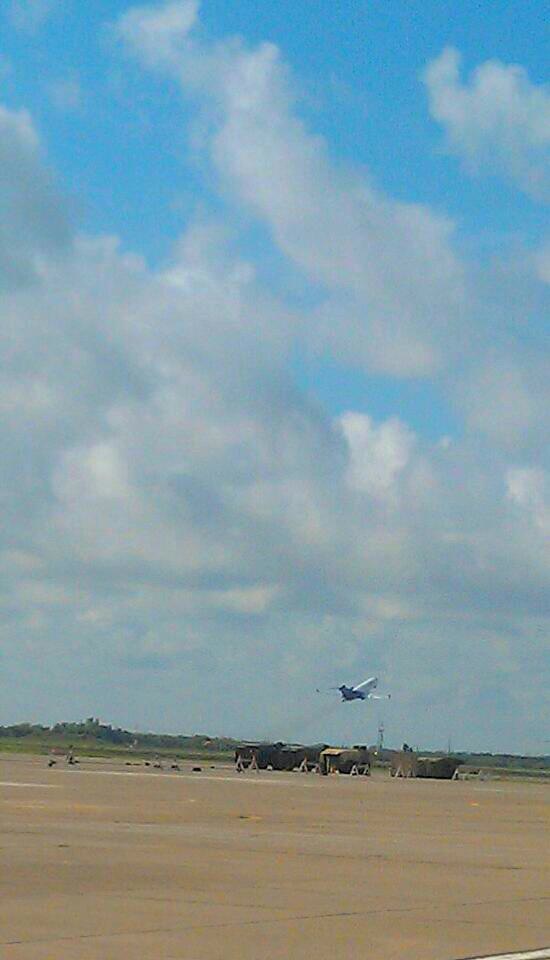 At take-off, flight is deceptively normal.
At take-off, flight is deceptively normal.
Once we were over the Gulf, it was time for the parabolas to start. To get to Zero-G, you must first go through hypergravity – specifically, 2-G’s of it. And that, is weird. 2-G is like all those times when you’re sick and you think you’re lifting your head or your arm but really you’re not, and at the same you’re also walking through very thick mud and it’s a good thing there aren’t any crocodiles chasing you because there is no way you would ever get away. The weight presses down on every part of you, and it’s a really good thing we didn’t have to agitate the soil in the box in 2-G because our team would have needed to add a weightlifter to the roster.
After 2-G however, there is about a two second long transition, and suddenly up is down and you’re falling really fast but, since you can’t see the outside, it just feels like you’re floating. For about twenty seconds, we got to stick our proverbial tongues out at gravity (or at least, our perception of it) and play at being able to fly. Sometimes we played at being really confused as to the location of the floor of the plane, and whether or not we had, in fact, just narrowly avoided falling on our equipment when gravity came back to normal.
After a few parabolas to get used to the sensation, we strapped ourselves to the floor, and commenced with what we were actually supposed to be doing: taking spectra.
During the 32 Zero-G parabolas, we had to time our spectra measurements to about a second after the no gravity started heading back into micro-gravity. The gravity changed very quickly, so we ended up with a range of microgravity spectra measurements, not just those from Mars. Our best data likely came from the four specifically Lunar and Martian gravity parabolas near the end. Tamra ended up taking over for one of our teammates when she became horribly ill, but in the end, we had the data.
After a total of 2.1 flight hours, we landed back at Ellington, content in the knowledge that every other plane ride for the rest of our lives is likely to be incomparably dull.
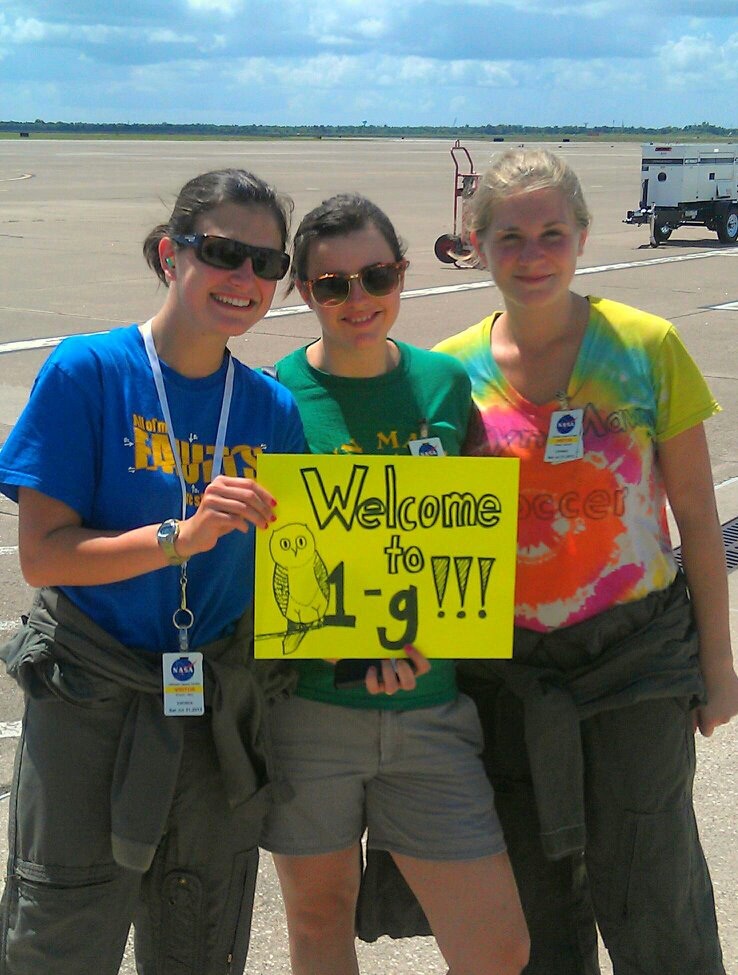
Team A2 was scheduled to fly that afternoon, but storms were once more brewing over the Gulf. Their flight has now been moved to Friday morning. Once again, let’s hope the weather holds!
As always, thanks for reading.
-Hannah and the Bryn Mawr Geology Microgravity Team
PS we don’t yet have footage of the flying, since NASA took most of it (we didn’t bring cameras on board) and we won’t get that for a few days, but we will hopefully get some from Tamra tomorrow. ^_^
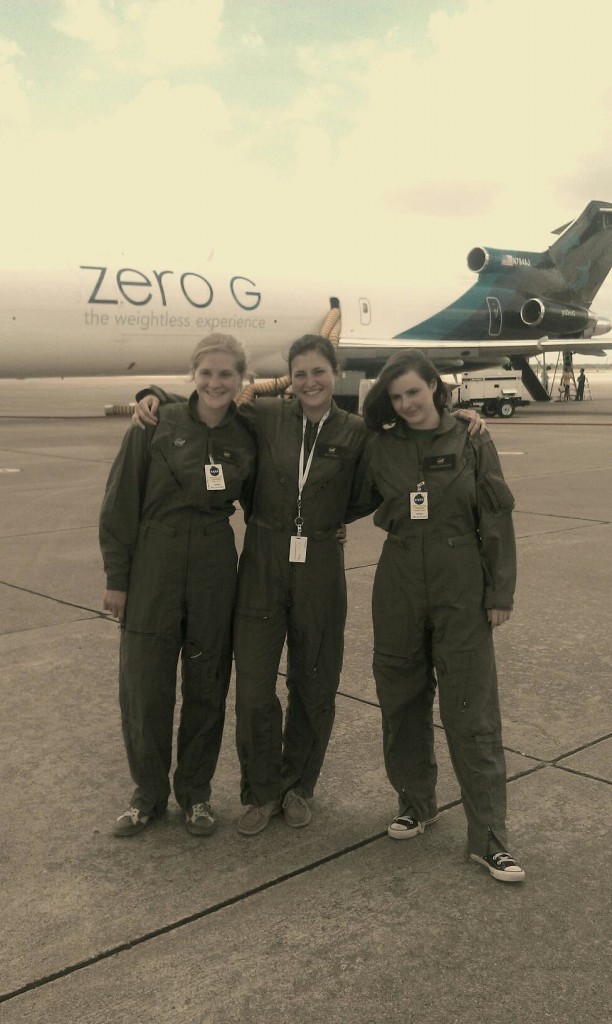 Outreach Champions. Trophies not distributed. (Left to right: Danyelle, Mary, Simona).
Outreach Champions. Trophies not distributed. (Left to right: Danyelle, Mary, Simona). Team A1 *wishes* they were still puking for science.
Team A1 *wishes* they were still puking for science.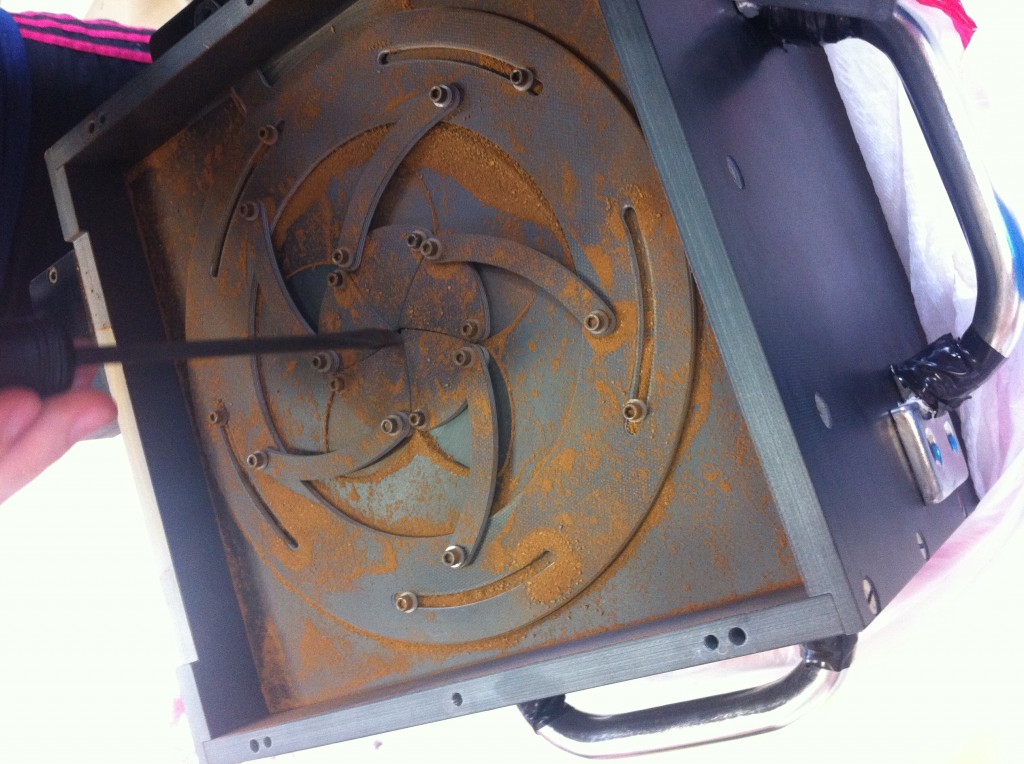 Gremlins. Clearly, it was gremlins.
Gremlins. Clearly, it was gremlins.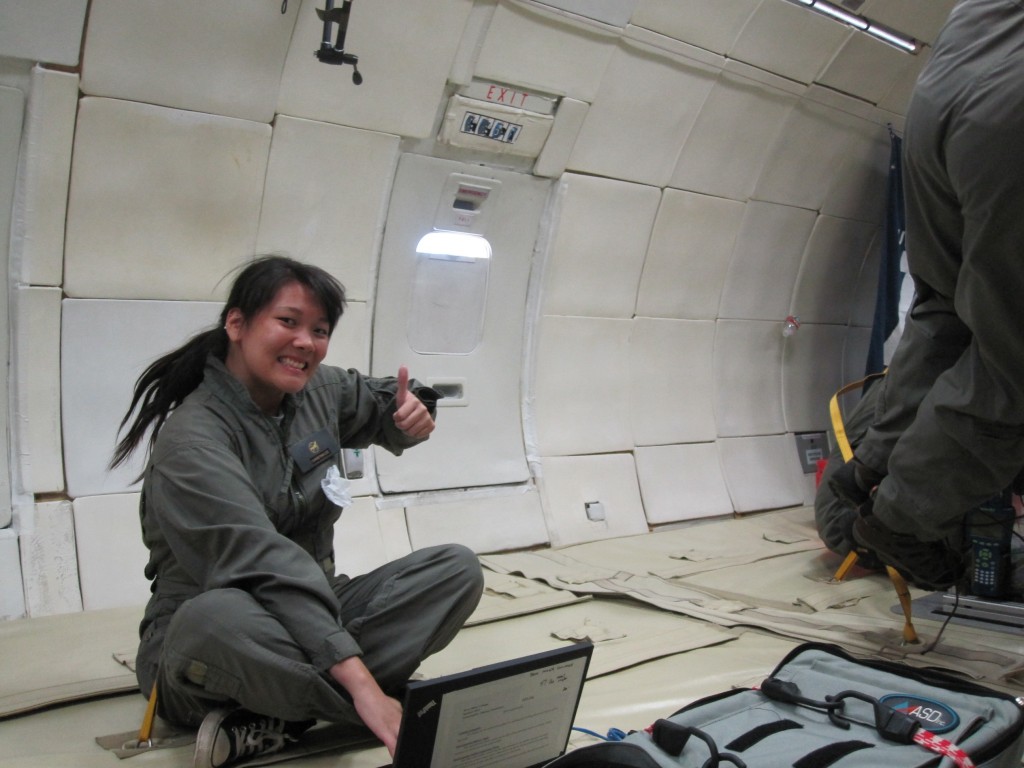 This message is Christina Approved.
This message is Christina Approved.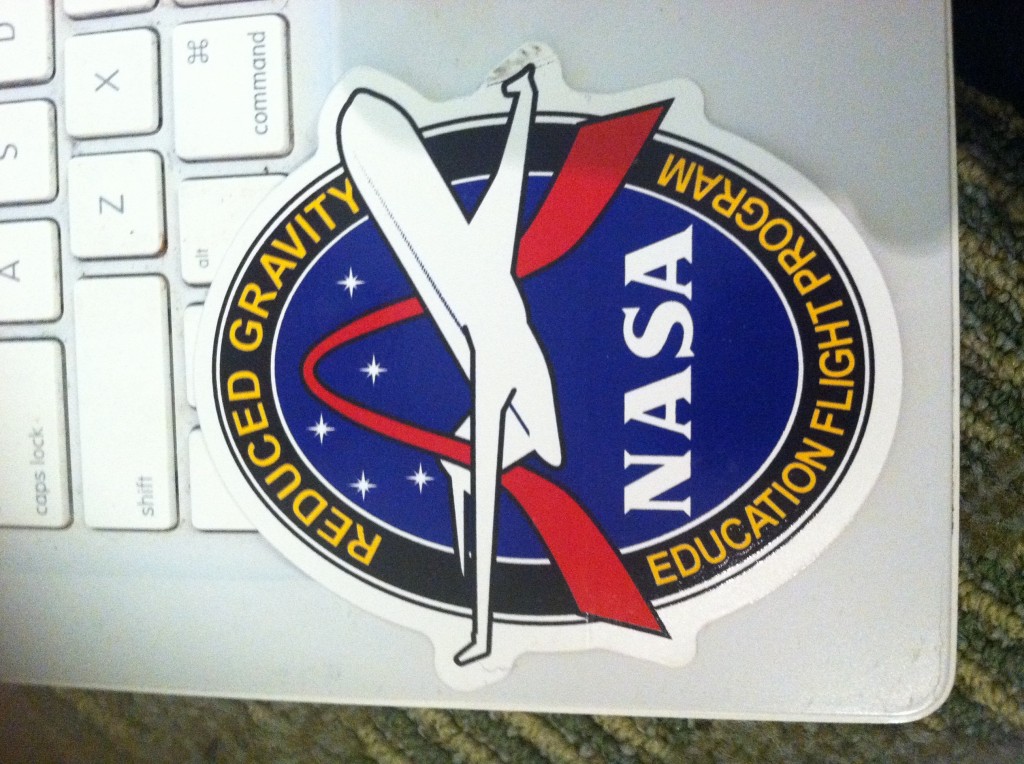 Worth one access badge to exclusive NASA flight hangar.
Worth one access badge to exclusive NASA flight hangar. Straps can barely contain her.
Straps can barely contain her.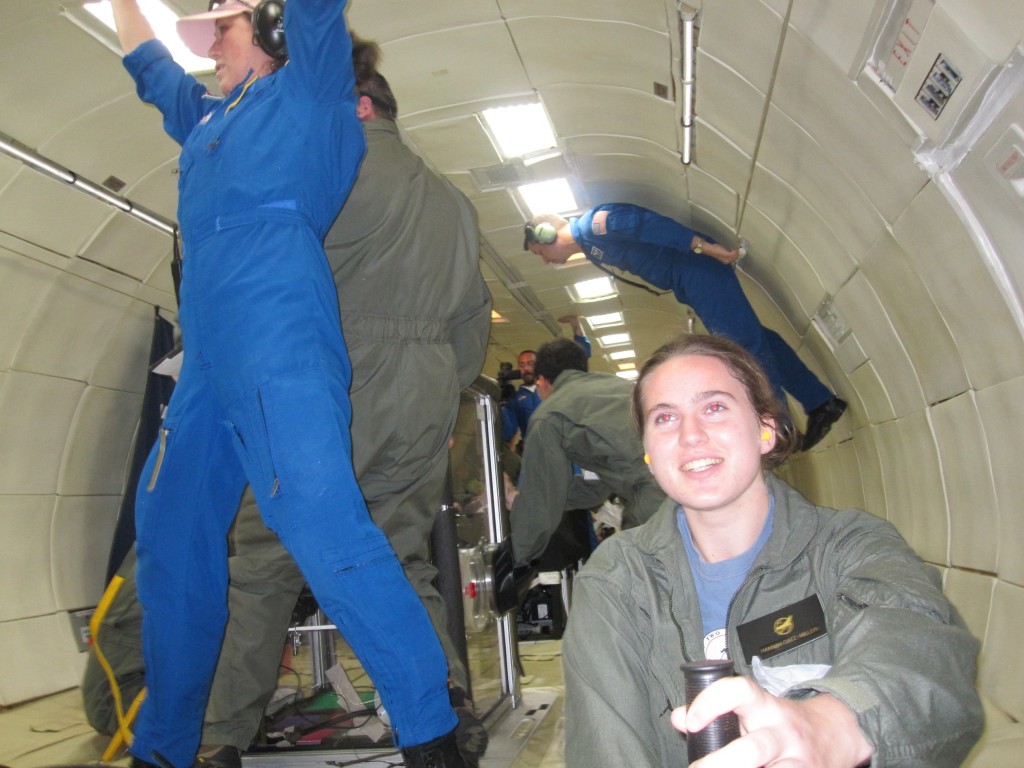 Actually extremely frustrated that people keep floating in front of the G-counter.
Actually extremely frustrated that people keep floating in front of the G-counter.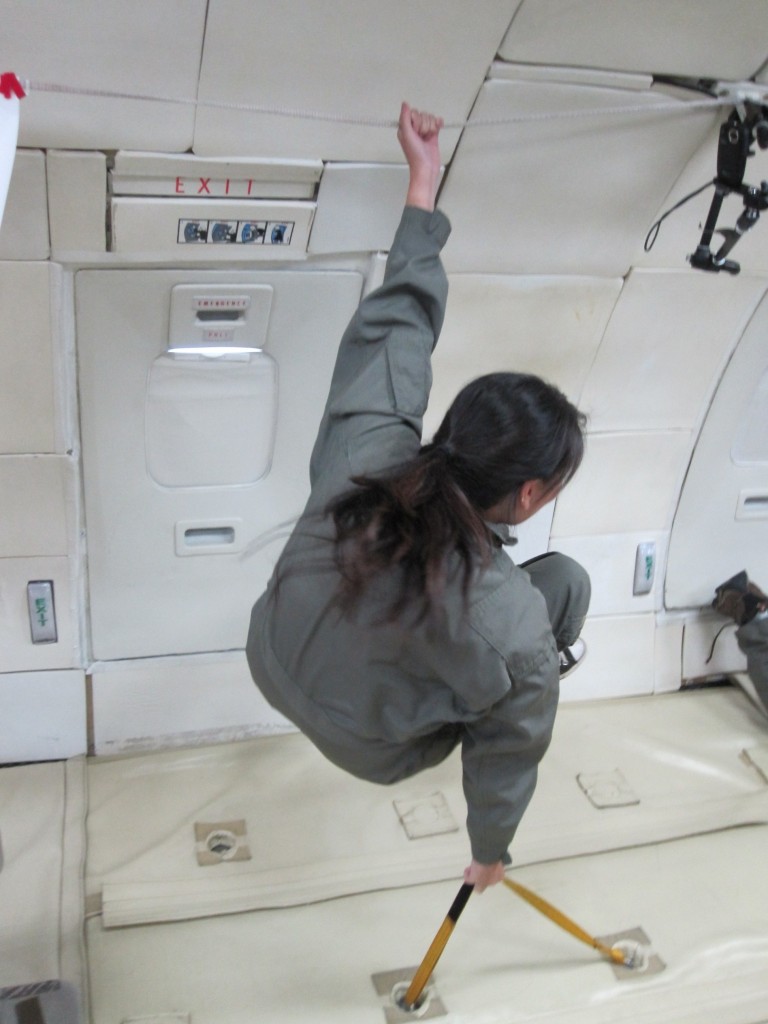 Not entirely sure which way it up, Christina grabs a handhold from both top and bottom.
Not entirely sure which way it up, Christina grabs a handhold from both top and bottom.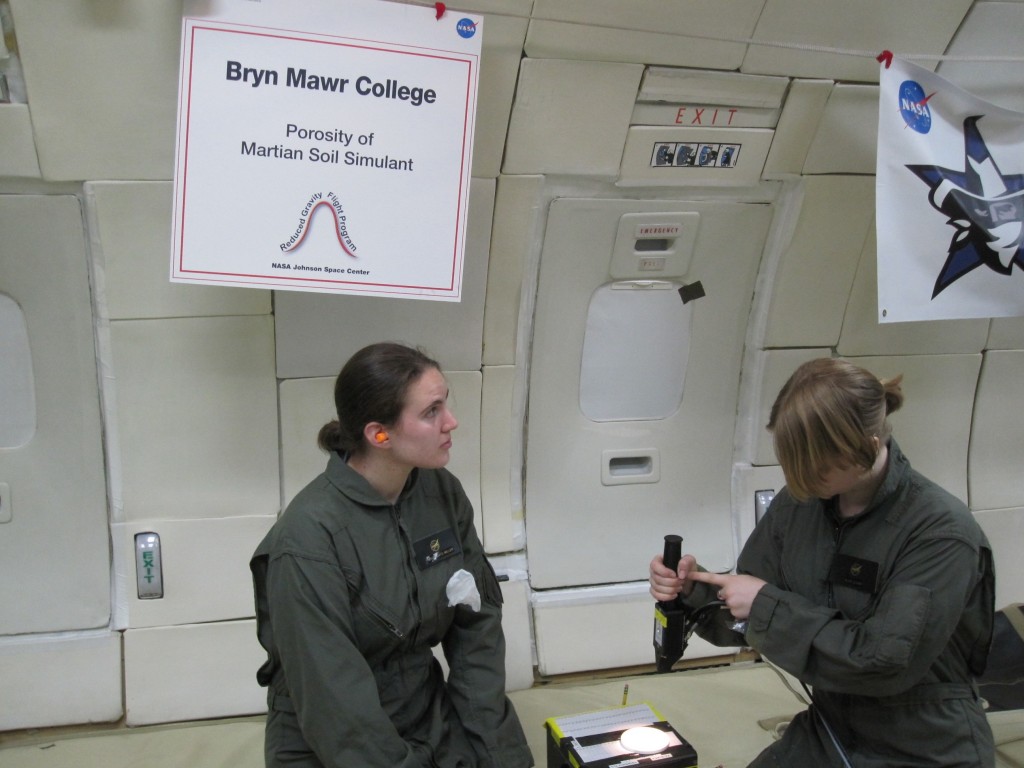 Hannah and Alice taking a white reference for the spectrometer.
Hannah and Alice taking a white reference for the spectrometer.
